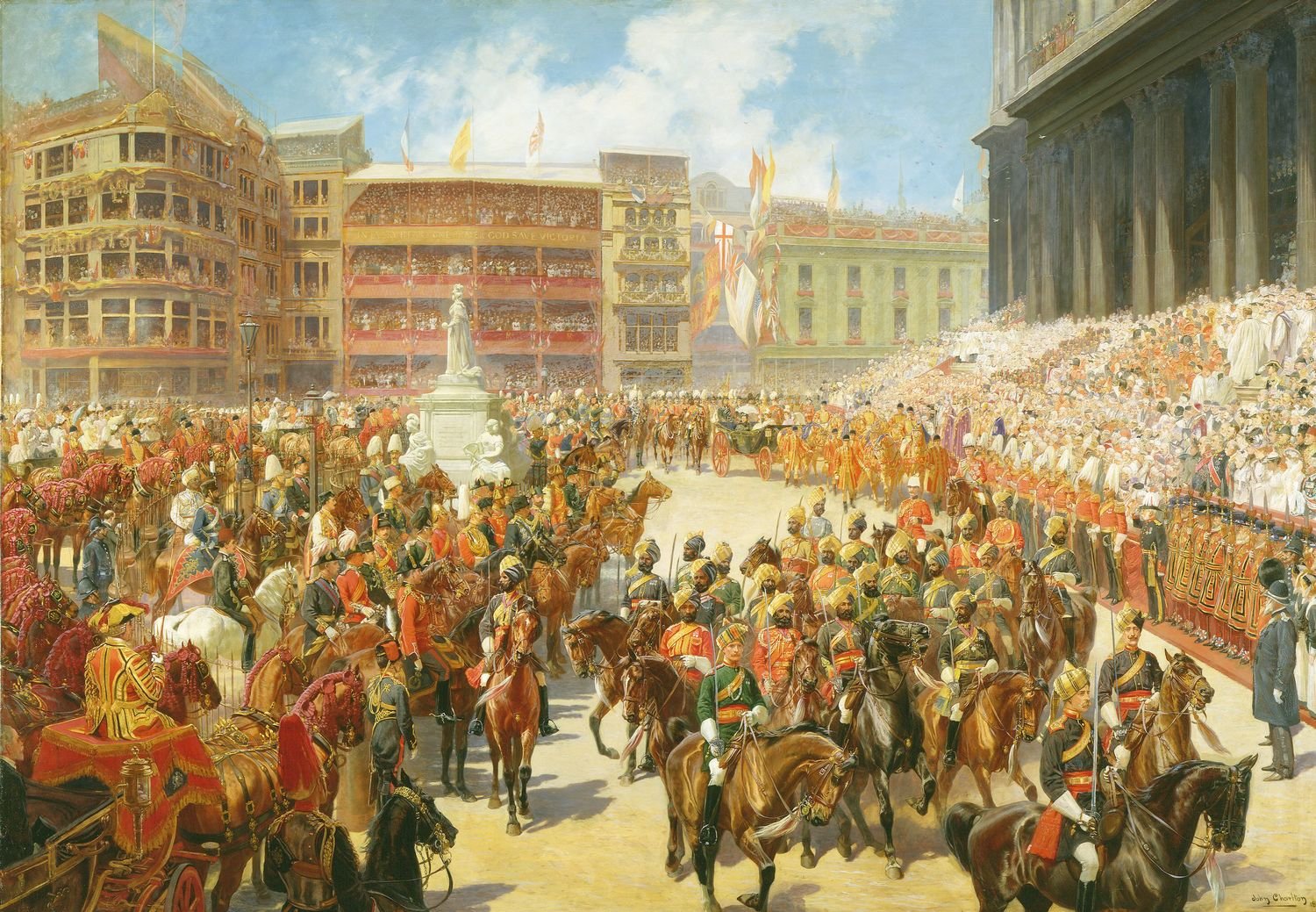
Royal Jubilees
Milestone years have been celebrated in long reigns since George III
ATTRIBUTED TO VATICAN WORKSHOPS
Poetry
1500 - 1650RCIN 550
This copy of one of Raphael’s ceiling decorations in the Stanza della Segnatura in the Vatican in Rome, executed between 1509 and 1511, was almost certainly made in the sixteenth century. The winged figure of Poetry sits amongst clouds on a throne carved with a bust of the Greek poet Homer. She is crowned with laurel leaves and carries appropriate attributes – a lyre (for Lyric as opposed to Epic poetry) and a large book. Two putti hold tablets carved with the inscription NUMINE AFFLATUR (to be moved by the spirit) referring to the importance of divinity as inspiration to poets and musicians. In Raphael’s scheme the four ceiling tondi, depicting the female personifications of Poetry, Philosophy, Jurisprudence and Theology each refer directly to the theme of the frescoes decorating the lunettes below – the Parnassus, the School of Athens, the Cardinal Virtues and the Disputa respectively. The Stanza della Segnatura was undoubtedly a key work of Raphael for Prince Albert, since porcelain copies of the four tondi were included in the decoration of the Audience Room at Windsor.
The technique now known as micromosaic was developed at the Vatican workshops around 1770. Coloured glass was drawn into thin rods which could be cut to produce minute tesserae, which were set into mastic with a plaster support. In this example, tinted mastic was worked into the surface to accentuate the design. The Vatican mosaic workshops were originally set up to replace the deteriorating frescoes in St Peter’s Basilica with a more durable alternative which bestowed a similar appearance to painting. Soon, however, they were used to create works of art in their own right. Refinements to the technique in the nineteenth century meant that many more colours could be produced and tesserae could be smaller and laid more densely (up to 1,400 per square inch), so that the impression of painted enamel as in this example – was yet more pronounced.
While small decorative items such as jewellery or boxes were produced in large numbers as souvenirs for tourists, the Vatican workshops remained the centre of the luxury mosaic industry throughout the nineteenth century and pictures such as this were often commissioned as papal gifts, a practice that continues today. Pope Pius IX presented Queen Victoria with a table with views of Rome (RCIN 41305) in 1859 to commemorate the visit of Albert Edward, Prince of Wales to Rome in that year.
Text adapted from Victoria and Albert: Art & Love, London, 2010
The technique now known as micromosaic was developed at the Vatican workshops around 1770. Coloured glass was drawn into thin rods which could be cut to produce minute tesserae, which were set into mastic with a plaster support. In this example, tinted mastic was worked into the surface to accentuate the design. The Vatican mosaic workshops were originally set up to replace the deteriorating frescoes in St Peter’s Basilica with a more durable alternative which bestowed a similar appearance to painting. Soon, however, they were used to create works of art in their own right. Refinements to the technique in the nineteenth century meant that many more colours could be produced and tesserae could be smaller and laid more densely (up to 1,400 per square inch), so that the impression of painted enamel as in this example – was yet more pronounced.
While small decorative items such as jewellery or boxes were produced in large numbers as souvenirs for tourists, the Vatican workshops remained the centre of the luxury mosaic industry throughout the nineteenth century and pictures such as this were often commissioned as papal gifts, a practice that continues today. Pope Pius IX presented Queen Victoria with a table with views of Rome (RCIN 41305) in 1859 to commemorate the visit of Albert Edward, Prince of Wales to Rome in that year.
Text adapted from Victoria and Albert: Art & Love, London, 2010







